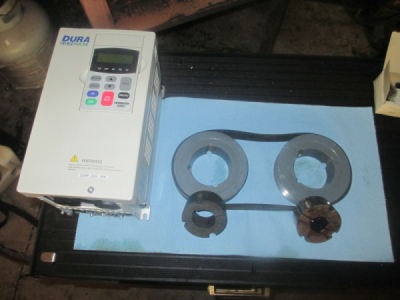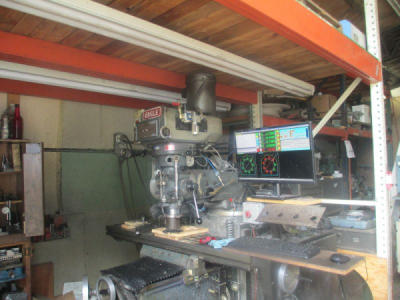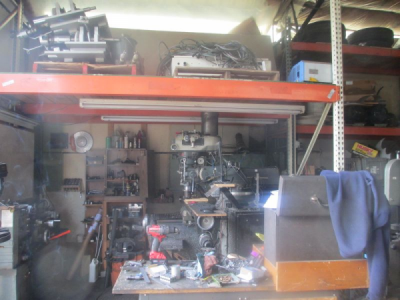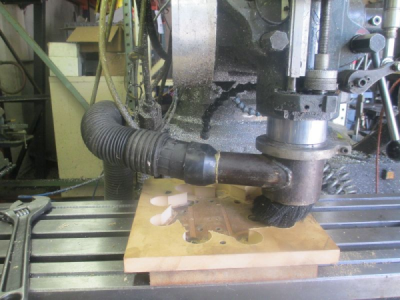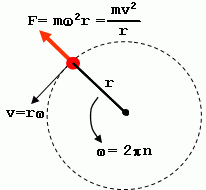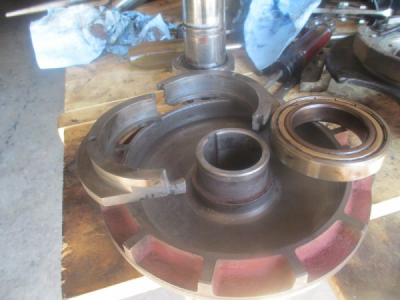More fun and games.
Ready to drag it out
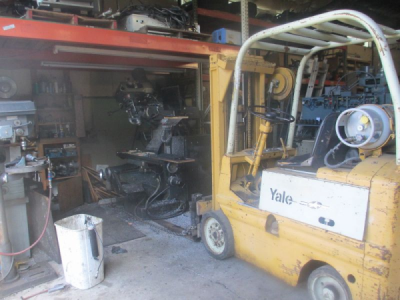
This just cleared the vice with almost an inch to spare

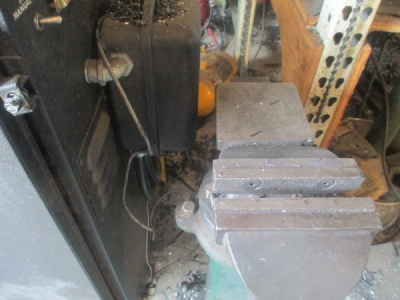
Just ran the chain around the base and pulled. Just over an idle was all it took. Slow and careful.

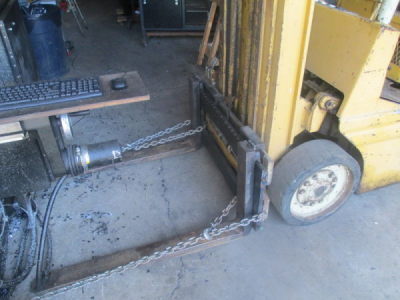
And there it is.

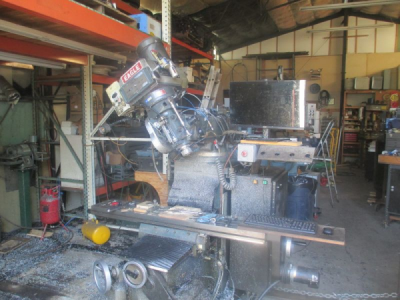
I didn't get any pictures of pulling the motor, but I just chokered it with a strap, and lifted it out.
I made this little block a while back to put in the vari-drive pulley to keep it open so it's possible to loosen the belt. Fits right around the shaft. Just a chunk of 1 1/4 pipe.
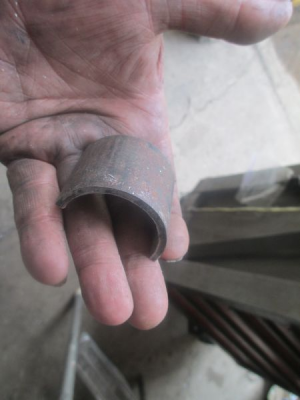
One small problem with the way the cover is designed, there is no room to get your hand in there to place the block, so I stuck a welding to it for a handle. I'm pretty good at sticking welding rods anyway

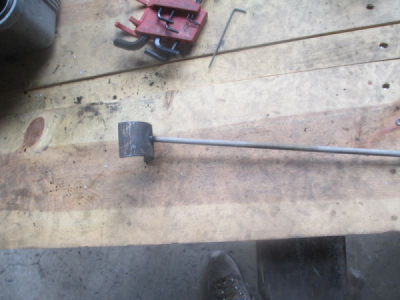
Now for the problems. I have some parts here from Alloy's Kent mill, and the heads look the same from the outside, so I used those to measure for the Taper-Loc bushings. Well that didn't work out so well. It turns out that all mills are not created equal. The Kent driven shaft is 35mm over it's entire length. Mine is 38mm except for the top bearing area. The good news is that 38mm is a standard Taper-Loc bore. So no problem there. It will be on order this afternoon!
The other thing I failed to concider is the 7 inch cast steel lower pulley half, which is also the brake drum. I sized the new pulleys to take the motor rated speed of 6,000 RPM, but that 7 inch pulley half is only going to take 4250 RPM. Can you say cast steel grenade


. Now what to do????? I could just limit the speed to 4250, or take the cast pulley off and not have a brake, or maybe make a new brake drum out of some 4350 so it would take the speed. Operating without a friction brake would not be a terrible thing, it only gets used for tool changes, never for stopping the spindle. Dropping it in to back gear gives plenty of resistance to do tool changes. Decisions decisions.

This about where the new driven pulley will sit.
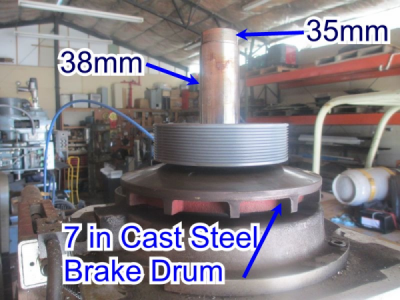
Here is about where the motor pulley will sit in the housing. The good news is the the pulleys will line up just fine with no modifications to anything. BUT..............I ran into another small problem.

The Kent mill motor shaft seemed to be 28 mm (1.102) over the entire length, a little hard to measure because is was torn up so bad. So I ordered a 28mm bore Taper-Loc. Well it turns out that the design of mine is completely different. In the picture you can see the step in the motor shaft, 23mm (0.906) then steps up to 29mm (1.142) just above (actually below, it's upside down on the bench) the pulley, and of course stock Taper-Loc bore sizes are 28 or 30 mm, no 29 mm

I guess I'll bore the bushing out to 29mm and make a special key or maybe turn the motor shaft to 28mm
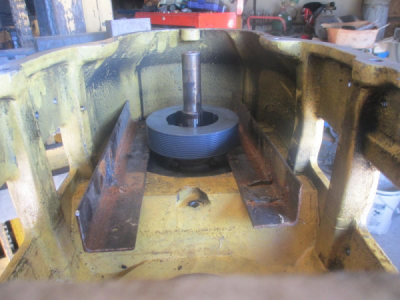
Next I have to figure out how to tighten the belt. With the vari-drive, the motor is just bolted in place with no provision for adjustment. I think I can get away with just slotting the motor base and call it good. I won't know for sure until I'm able to install the pulleys and see how much travel I need in the motor.
More later......
.
.




